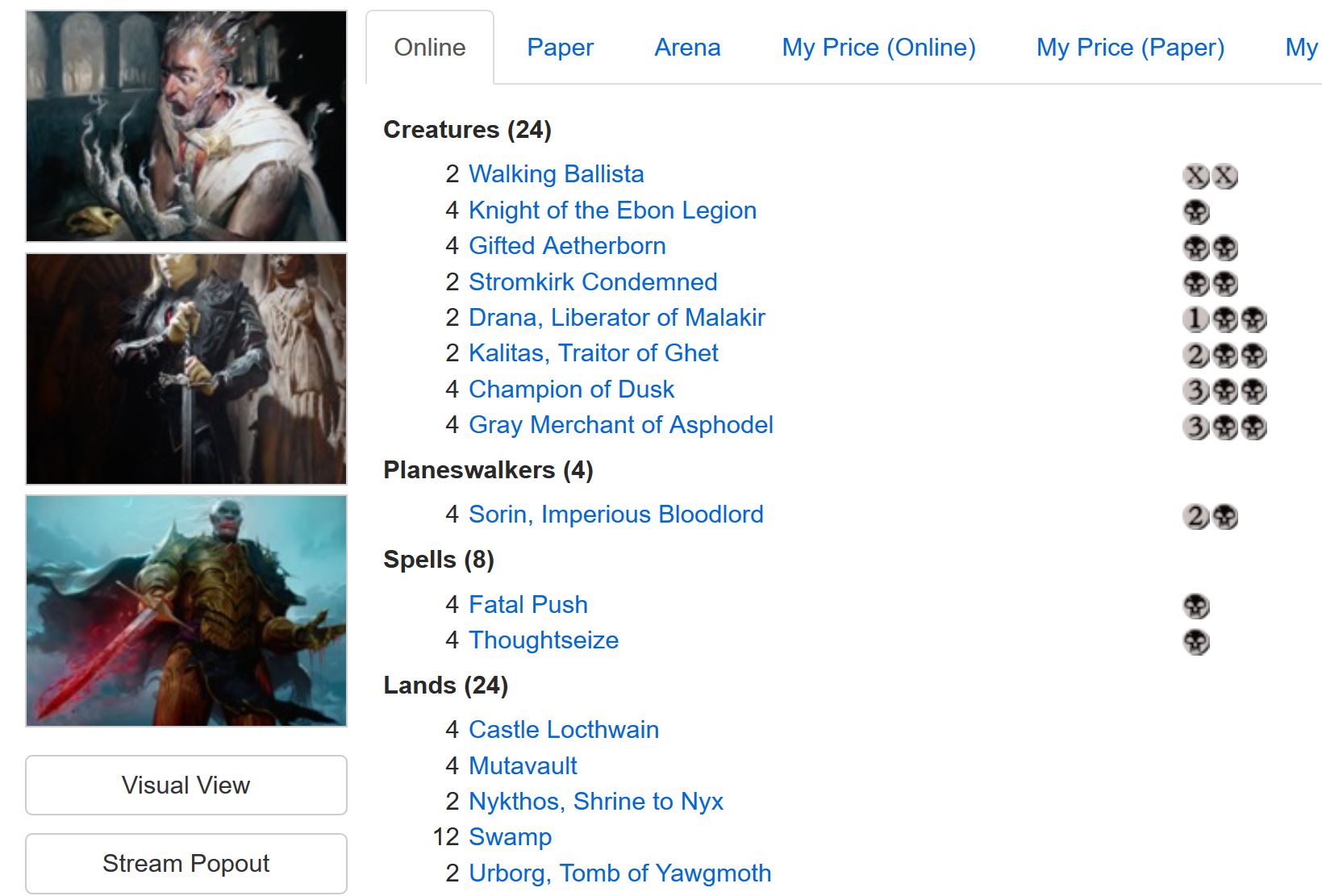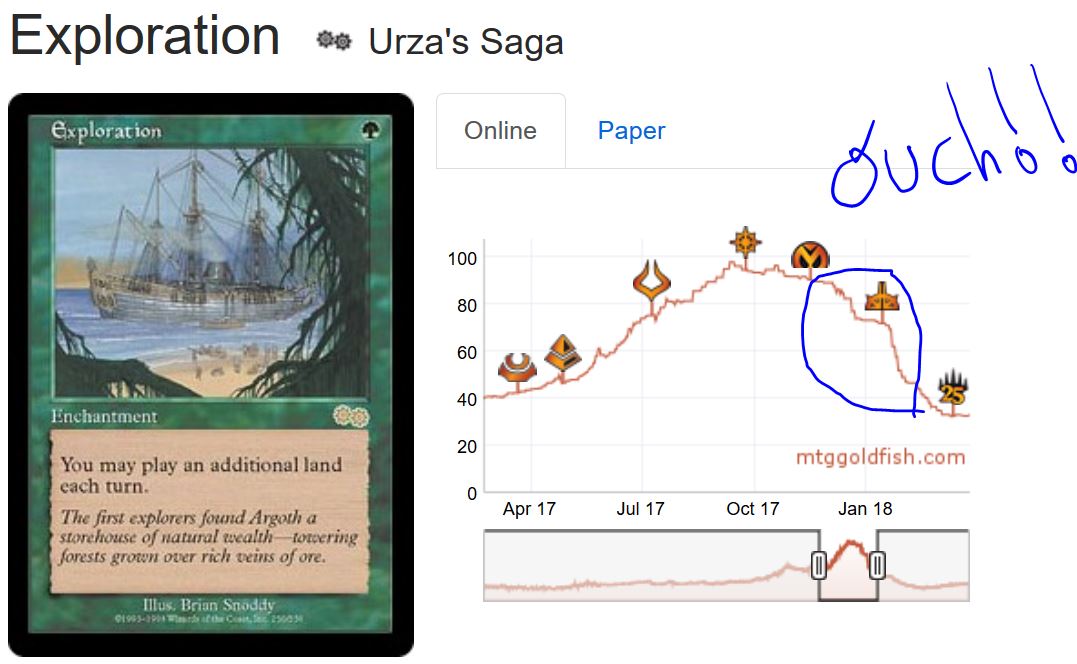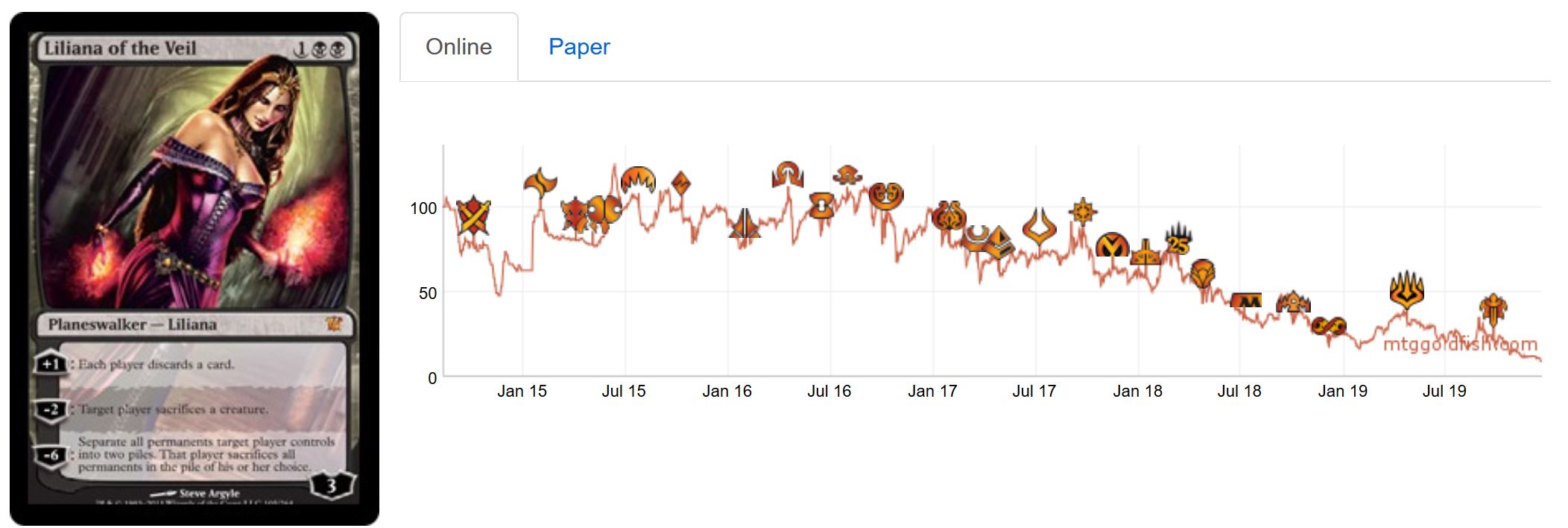Are you a Quiet Speculation member?
If not, now is a perfect time to join up! Our powerful tools, breaking-news analysis, and exclusive Discord channel will make sure you stay up to date and ahead of the curve.
Welcome back, folks.
In Part I, I covered the basics of renting on MTGO, and in Part II I provided details about the renting plans that Cardhoarder and ManaTraders offer. Today I'd like to go beyond the basics and explore a few more "advanced" applications of renting, strategies useful to both investors and players alike. These strategies are not exhaustive, but they show some the breadth of how renting can help you play Magic in the way you want to.
I. Renting As You Build your Collection
Maybe you came to MTGO from Magic Arena looking to play Pioneer or have a more traditional TCG experience. Maybe you came to MTGO because your local game store closed down or, due to changing personal circumstances, you no longer have time to go as often as you'd like. Maybe you're like me, an MTGO Limited player dipping his toes into Pioneer and Modern for the first time, and that $600 price tag looks a bit steep.
Renting is a great tool you can use to play Constructed without making a steep initial investment. I mentioned this in Part I of this series, but what I didn't discuss is that this can be placed into a collection-building context. You can use renting as an on-ramp of sorts, renting the majority of cards in a deck you play at first, and then gradually renting less and less over time as you build your collection.
Case Study: B Vampires (Pioneer)
Let's say you're new to MTGO and you want to play B Vampires in Pioneer (decklist here). The total value of that deck is $319.92. To rent this deck would cost $9.60/week on Cardhoarder and $8.07/week on ManaTraders, so you decide to go with ManaTraders.

$8.07/week is great if you're playing with the deck a lot. In general, too, Constructed on MTGO is positive EV, so you aren't likely to incur any additional costs by playing with the deck, and a single 4-1 finish pays for your subscription for the whole week! But, consider this: If you rent this deck for three-quarters of a year (38 weeks to be exact), you will have paid more than the whole cost of the deck just to rent it! If you're a black mage, really enjoy the B Vampire deck, and want to keep playing the Pioneer or Modern formats, it is strongly worth considering gradually purchasing some Black staples in the B Vampire deck so that you can gradually lower your rental limit and save money in the long run.
Here's how I might adopt this strategy with this deck:
Month 1: Rent $8.07/week with ManaTraders
Month 2: Rent $8.07/week, buy 2 Thoughtseize
Month 3: Rent $8.07/week, buy 2 Thoughtseize
Month 4: Rent $7.39/week with Cardhoarder, buy 1 Liliana, the Last Hope
Month 5: Rent $6.40/week, buy 4 Mutavault
Month 6: Rent $6.09/week, buy 4 Fatal Push; 4 Castle Lochthwain; & 1 Nykthos, Shrine to Nyx,
Month 7: Rent $5.03/week, buy 1 Murderous Rider // Swift End & 2 Kalitas, Traitor of Ghet
Now, after 7 months, the rental limit you need is $168 instead of $320, and you own a lot of Pioneer, Modern, and Standard staples that you can use in other decks and formats. This means that you'll be paying about $10/month less for your subscription, and you'll have greater flexibility to play different decks in the future.
When implementing this strategy, remember the following two pointers. (1) This strategy is easier to implement with Cardhoarder because you can continually lower your rental limit. (2) Notice how I opted to buy more generic cards instead of the Vampire cards. I opted to own the Thoughtseize, Murderous Rider // Swift End, and Liliana, the Last Hope instead of Knight of the Ebon Legion and Sorin, Imperious Bloodlord.
That's because these cards are more likely useable in other strategies, and thus will be more "valuable" for those who like to rent decks. Remember that a big advantage of renting is that you aren't losing money from buying and selling the same card over and over again, essentially paying the difference between the buy and sell price every time you complete this transaction cycle. When exchanging decks, you're far more likely going to want to send back those vampire cards instead of those Thoughtseizes and Fatal Pushes.
II. Mitigating the Risk of Ownership
Renting cards that you suspect will be worth less in the future is a way for all players on MTGO to benefit from renting. This is the main reason why I'm interested in signing up for a rental plan, and it is likely going to make me more comfortable jumping into Constructed on MTGO.
The last time I tried to seriously start playing Constructed on MTGO I got burned by the declining price of Exploration.

I bought into a Lands deck for Legacy, and from the time I started to the time I stopped, Exploration had crashed from $80 to $30, wiping out $200 from my account in a flash. Renting can protect you from this scenario if you can predict whether a card is going to decline in value. Here are some good guidelines:
(a) Rent cards with Treasure Chest frequencies 12 or greater.
MTGO maintains a treasure chest page where you can look at what cards are being added to the MTGO economy through treasure chests, as well as how often they are being added. Bookmark this page. The higher the treasure chest frequency, the more are being pumped into the system. Any card with a 6 or greater frequency will create significant downward pressure on Standard, Pauper, Legacy, or Vintage; any card with a 12 or greater frequency will create significant downward pressure on Pioneer or Modern cards.
(b) Rent cards that are likely to be banned.
If a card is dominating a format and you see a lot of player anger being directed at that card, there's no reason for you to assume the risk that comes with owning that card. Just rent it instead.
(C) Rent cards that have been trending downward over time.
Some cards, even iconic ones, just aren't as good as they used to be. Others have had their price buried by reprints or past treasure chest inclusion. Avoid these cards. If the card's price history on MTGGoldfish looks like those of the Innistrad trifecta of Liliana of the Veil, Tarmogoyf, or Snapcaster Mage, rent!

III. Shorting
For those unfamiliar with the term, shorting is the trading practice of selling a commodity, stock, or security with the intention of buying it later at a cheaper price. Applied to Magic and specifically to renting on MTGO, shorting is the practice of renting a card, selling it, then buying it again to return to the company you rented the card from. The goal of the practice is to rent the card at a certain price, then sell it before it drops in price; that way when you buy the card again to return, you'll have made a profit.
Shorting is against the terms of service for both Cardhoarder and ManaTraders, and thus has something of the allure of Eden's forbidden fruit. It is the only way to profit off a card that drops in price.
Putting aside the ethical concerns, shorting is not a good investment strategy to "seek out". The main reason for this is that you have to pay a weekly fee in the form of a rental subscription to be in a position to short cards in the first place. A second main reason is that you can only short four copies of any given card, so you can't profit in a major way in the same way that you can through traditional speculation and investment. This means that the only people who should even consider shorting are those who are already using the rental service for the sake of playing MTGO; you shouldn't sign up for a rental service for the sake of unlocking the ability to short cards.
Now that B&R announcements will no longer be regular and forecasted, the best opportunity for shorting cards is no longer available (e.g. renting out Okos and OUATs and selling them before each B&R announcement until the cards get banned). There will be instances when shorting makes sense for those with a good pulse on the market, but I would only short cards you are already renting for playing purposes. My recommendation is to focus your MTGO finance energy on investment and speculation, not on shorting.
Signing Off
Thus concludes this series on renting on MTGO. I'm happy this series was so well received and helped so many people. I will be signing up for a rental service myself (likely with a card value limit of $100) that will help me get into Pioneer and Modern, and I know from your feedback that many others are doing the same.
I wish all of you a merry Christmas and a happy New Year, and I'll be back in the new year with more MTGO finance content. I'm enjoying being back in Texas for a while before returning to Toronto, where I expect the ground to be blanketed in snow upon my return. Until then, hopefully, I'll bump into some of y'all on MTGO!





















